Hyva India predicts uptick with the entry of BS VI tippers
An insight into the hydraulic industry market and the whole expectation that hangs on it. Special insights from Hyva India
As the Indian automotive industry, which is actively engaged in the upgrade to BS-VI emission norms, readies for the big technological shift mandated from April 2020, it will also gain from collateral benefits. That as well as the government’s and Finance Minister Nirmala Sitharaman’s recently announced big-ticket investment of Rs 20 lakh crore in infrastructure development over five years, will give a boost to the medium and heavy commercial vehicle (M&HCV) sector. In the recently announced union budget, the minister announced steps to scale up India’s infrastructure programmes with more than 125,000 km of rural roads under the Pradhan Mantri Gram Sadak Yojana at a cost of Rs 80,250 crore. The hydraulic equipment industry is keeping its hopes high for an uptick by the second half of the year.
In a recent interaction with Anand Ganguly (pictured below), managing director, Hyva India, we found out that the market for the hydraulic equipment industry in India is expected to pick up in the second half of the year, on account of the festive seasons and pre-buying of tippers before the introduction of BS-VI in April 2020.

He forecasts a continuing growth pattern for the international hydraulic industry due to the new energy-efficient hydraulics and ubiquitous use of fluid power in modern engineering. However, he does predict that the introduction of regulations relating to emissions standards can have a short-term impact on demand as truck OEMs and owners adjust to the new standards but won’t really impact on demand over the longer term.
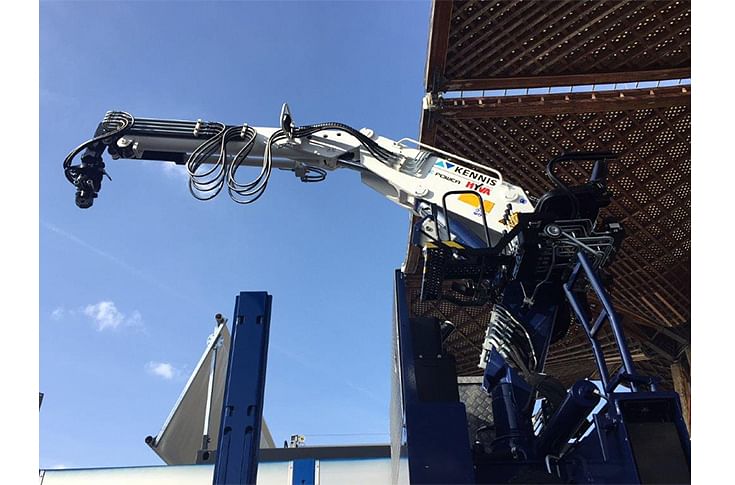
Hyva 'KENNIS' e-Power Crane
According to ResearchAndMarkets.com, the demand for mobile equipment has been falling consistently post 2011 due to shrinkage in demand in infrastructure, farm equipment and industrial equipment. However, post-2015-16, with the Government’s increased focus on investments in infrastructure projects; the demand for capital equipment grew exponentially.
The demand for hydraulic cylinders is primarily driven by the growing demand for hydraulic cylinder based equipment which is used in industries such as manufacturing, construction, mining, agriculture, aerospace, and defence. One can anticipate that the recovery in economic activity will bring cheer to the sector and many of the OEMs will have to expand its current manufacturing facility to cater to the growing demand.
According to a report by Global Market Insights, the single-acting hydraulic cylinder industry will witness growth of over 4 percent by 2025 while the double-acting hydraulic cylinder market is estimated to reach over $11 billion (Rs 79,441 crore) by 2025. The report further claims that the demand is anticipated to exceed further across the areas where the working fluid acts alternately on both sides of the piston such as forklifting, heavy trucks, earth moving equipment amongst others.
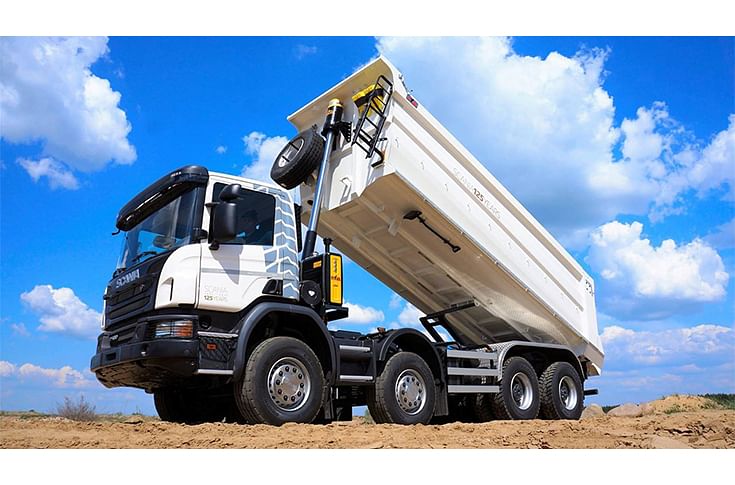
Hyva's front-end tippers
Raising hopes
Celebrating its 40 years globally, Hyva, a Netherlands-based truck loader crane and hydraulics manufacturer, came in India in 1997 and started from Navi Mumbai with front-end hydraulic cylinder kits. With operations in 110 countries and with over 3,500 employees around the world, it claims to have over 40 percent market share in front-end tipping solutions globally and now aims to dominate the Indian market. India accounts for nearly 20 percent of its global revenues and comes in third after China and Europe. Today, Hyva India produces hydraulic cylinders, tipper bodies, mobile compactors and container handling systems like hook loaders from this plant. In lieu of the rising demand in the market, in the year 2000, Hyva designed and started manufacturing tipper bodies to suit the application. In 2015, Hyva introduced its new range of waste handling products to help bring about efficient waste management solutions in India.
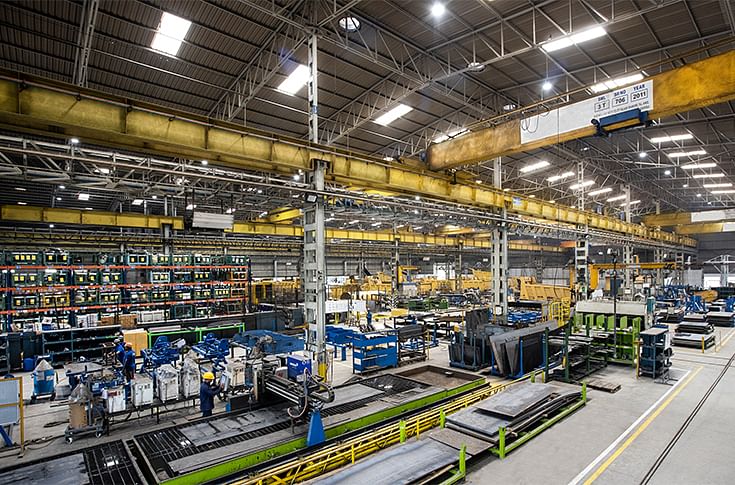
Hyva India plant in Navi Mumbai
According to Ganguly, “Waste handling equipment and services are becoming more and more popular in India and in the overseas market. Indore won the ‘Cleanliness Award’ for three consecutive years and we are proud to have played an important role in it. We are in cohort with the Indian government for initiatives such as ‘Swachh Bharat Mission’ and ‘Make in India’.”
Considering the Rs 10 billion revenue in CY18 and a growth of 20 percent over the past 3 years, Ganguly confirms that they will continue with their focus on the waste handling products as well as on innovative electronics-equipped cranes. He has also confirmed that Hyva is one step ahead in the Indian market with the latest transformation in its entire crane product portfolio. Along with a full-fledged crane range from 1 to 165tm (ton-metres), they now have a new range of mid-sized cranes in the core 9-21tm (ton-metres) class.
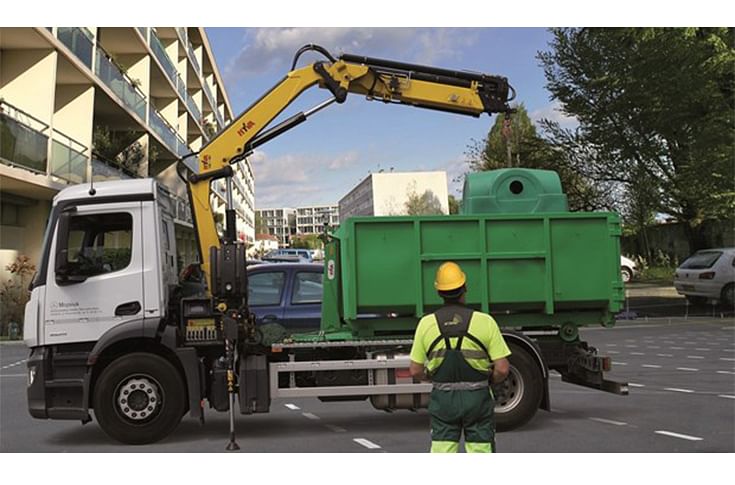
Flowing with the current
In this age of megatrends, we prodded Ganguly about the electrification trend in the industry and what Hyva was doing about it: “Introducing electric engines is part of our general technology development process that leverages the potential of the machinery and facilitates maintenance. Smart solutions can find various applications, including the mining sector. Recently, we have launched a brand-new Hyva ‘KENNIS e-Power Rolloader’ crane, featuring an electric powertrain, rather than a conventional diesel one. Electric power offers considerable benefits including improved energy efficiency and lower environmental impact – no exhaust fume emissions and lower noise levels. Moreover, our electric system means that the crane can be operated when the truck engine is switched off.”
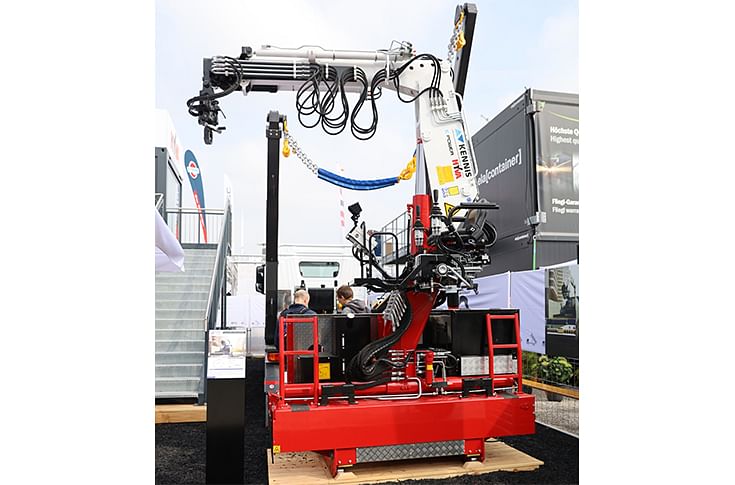
Hyva KENNIS e-Power at BAUMA
The hydraulic industry also seems to have caught up with the connectivity technology and Hyva has a few tricks up its sleeve in this aspect as well. Ganguly reveals, “Hyva Smart is based on extensive use of the Internet of Things (IoT) technology and comprises the development of cutting-edge sensors for the truck industry. The new sensor-based monitoring system adds intelligence to the vehicles. The sensors benefit the end-users by guaranteeing the safety of operations, increasing fleet efficiency, productivity, and better maintenance. Basically, we provide the drivers and fleet owners with an intelligent environment in which they are supported to make data-based decisions. Designed around cloud connectivity, the system is suitable for any type of vehicle and tipping body – tipper truck or semi trailer – and can be used anywhere, at any time.”
According to industry experts, in 2019, material handling equipment such as level luffing cranes, stackers and electronic overhead traveling cranes will extensively be used by multiple industries such as food and beverage, power and energy, retail and oil refineries other than construction and engineering sectors. This will stimulate the adoption of material handling equipment and thus helps the growth of the hydraulic cylinders market.
RELATED ARTICLES
Auto Giants Explore Hybrid Strategy as EVs Hit Speed Bumps
Slower-than-expected EV adoption, tight CAFE norms and ever-present efficiency demands are giving hybrids a second wind ...
Continental Taps India as Global Hub for R&D and Manufacturing
Continental’s spin-off of its automotive business into AUMOVIO marks a strategic shift, placing India’s engineering and ...
India's EV Story: Promise, Progress, and Challenges
Amid the fanfare of new launches and soaring expectations, mainstream buyers remain hesitant.





 30 Aug 2019
30 Aug 2019
 27479 Views
27479 Views





 Ketan Thakkar
Ketan Thakkar


 Shahkar Abidi
Shahkar Abidi


